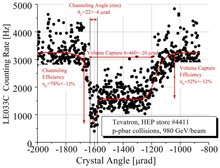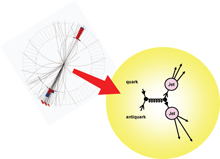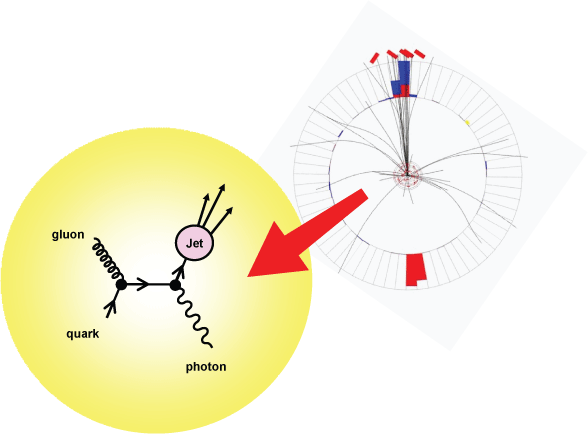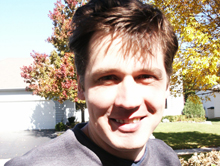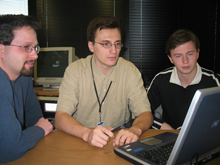 | Thursday, October 27, 2005 |
|
Thursday, October 27
Friday, October 28 |
|
Extended Forecast |
Secon Level 3 |
|
Thursday, October 27 -Tomato Florentine -Grilled Chicken Cordon Bleu Sandwich -Chimichangas -Chicken Marsala -Smoked Turkey Melt -Italian Sausage Calzones -SW Chicken Salad w/Roasted Corn Salsa The Wilson Hall Cafe accepts Visa, Master Card, Discover and American Express at Cash Register #1. |
|
Thursday, October 27 BOOKED
Wednesday, November 2
Chez Leon Menu |
| Fermilab Today is online at: http://www.fnal.gov/today/ Send comments and suggestions to today@fnal.gov Fermilab Today archive Hurricane Relief Page Fermilab Today PDF Version Fermilab Result of the Week archive Fermilab Safety Tip of the Week archive Linear Collider News archive Fermilab Today classifieds Subscribe/Unsubscribe to |
SAMGrid Lifts Job and Data Handling Burden
"SAMGrid integrates job handling and data handling with standard grid tools and services," said Adam Lyon from the Fermi National Accelerator Laboratory, where SAM and SAMGrid are developed and used. "In many grids it's the responsibility of the application to find, transport and annotate data. With SAMGrid, the application delegates SAM to find the best location to get the file from, transport it, record that you've asked for it and what you are doing with it."
SAM, which stands for Sequential Access via Metadata, started development in 1997 as a data handling system for Fermilab's DZero particle physics experiment. It was designed to store and retrieve data files and associated metadata--information about the data--including a complete record of the processing for each and every file.
|
|
From PhysicsWeb, October 24, 2005: Particles come to life What does a quark, a photon or a gluon look like? No one knows for sure but Jan-Henrik Andersen, an artist at the University of Michigan in the US, has created a series of visual images of elementary particles based on conversation with physicists at Michigan. The work was exhibited at Fermilab in the US during the summer and is highlighted in the latest issue of Symmetry magazine.
To produce the images Andersen worked with David Gerdes, an experimentalist, Gordon Kane, a theorist, and Sherri Smith, dean of the School of Art and Design at Michigan. The goal of the project was to represent particles in a physically accurate way while being visually appealing and technically feasible.
|
| Shining a Direct Light on Particle Interactions | ||||
| ||||
|
At the heart of Fermilab's two collider detectors, literally millions of particle collisions occur each second. Of these collisions, the vast majority are governed by the strong force, the strongest of the four forces of which we know. In most of these collisions, jets are produced, which are the signature of scattering quarks and gluons - the fundamental constituents of protons and neutrons. With such an enormous number of such collisions, one would think that the strong force is the most precisely measured of the forces, but this is not true. While the theory of these collisions is well understood and many excellent measurements exist, the complexity of the calculations and the details of the measurements preclude simple interpretation of the data. The DZero collaboration's recent investigation of photon production is helping to sort out some of the confusion. Photons, which are the carrier of the electromagnetic force, do not suffer from the same calculational and measurement difficulties of jets, allowing physicists to peer deeply inside the collision. Unlike jets, which are only a distant cousin of the particles that actually undergo the collision, a photon measurement allows a unique glimpse at the heart of the collision. Further, a photon measurement helps clarify just how the energy inside the proton is shared between quarks and gluons. Our understanding of how the energy is shared among gluons has been a limitation when interpreting many jet-production events. Photon measurements of this type are helping to sort out this mystery. |
||||
| ||||
|
||||
| Result of the Week Archive |
|
October 24 - 26
- During this 48 hour period, two stores provided 27 hours and 19 minutes of luminosity. - P1 vacuum bursts continue - Store 4468 sets new luminosity record with an initial luminosity of 144.906E30 - TeV B2 VCB opened and caused store 4468 to abort - DZero must open its detector for power supply work
Read the Current Accelerator Update
|
|
Veteran's Day Celebration
GSA Halloween Party
|
